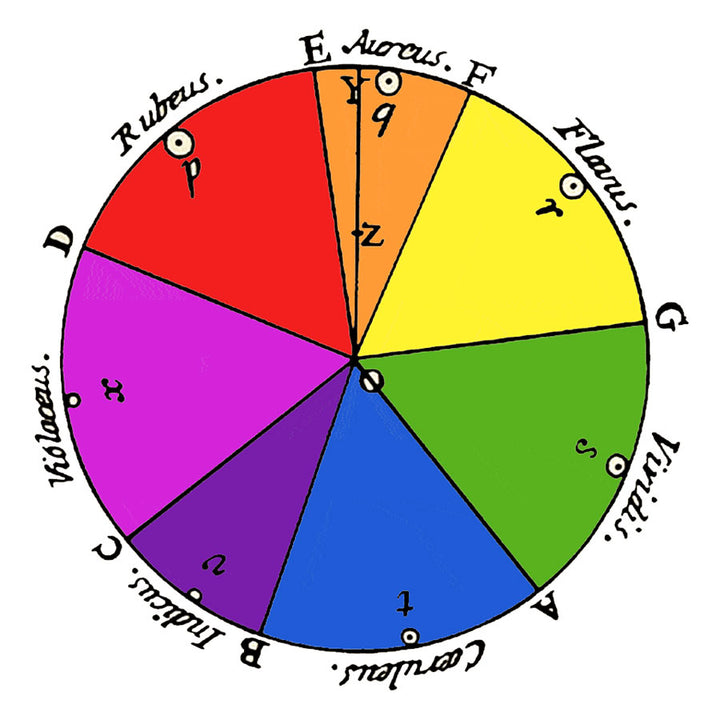
When we think about the colour wheel, it's easy to assume it’s a modern invention, perhaps a product of the 19th or 20th centuries. However, this essential tool for artists actually predates the founding of the United States, tracing its origins back to the early 18th century!
The colour wheel as we know it today was first developed by Sir Isaac Newton in 1704. Yes, the same Newton famous for his work on gravity and the laws of motion also made significant contributions to the world of art and colour theory. Newton’s colour wheel was a result of his experiments with light and prisms. He discovered that when white light passes through a prism, it disperses into a spectrum of colours. By arranging these colours in a circle, he laid the foundation for the colour wheel.
Newton's pioneering work in optics revealed the relationships between different colours. He placed red, orange, yellow, green, blue, indigo, and violet in a circle, showing how colours blend into one another seamlessly. This arrangement not only provided a visual representation of the colour spectrum but also demonstrated the harmonious relationships between colours, a concept that artists and designers have used for centuries.
Before Newton's colour wheel, artists had some understanding of colour mixing, but his systematic approach brought a new level of clarity and science to the field. It offered artists a guide for creating harmonious colour schemes, which was revolutionary at the time. The wheel showed complementary colours opposite each other, teaching artists how to achieve balance and contrast in their work.
Over the years, the colour wheel has been adapted and expanded upon by other theorists and artists. The 18th-century painter Johann Wolfgang von Goethe created his own version, emphasising the psychological impact of colours. In the 20th century, artists like Wassily Kandinsky further explored the emotional and spiritual effects of colour combinations, deeply influenced by the foundational work laid out by Newton.
The colour wheel's development over the centuries highlights a fascinating intersection between science and art. It’s a tool born from scientific inquiry yet indispensable to creative expression. Next time you pick up a brush or mix your paints, take a moment to appreciate this ingenious invention that has guided artists for over 300 years, long before the United States was even a dream.

